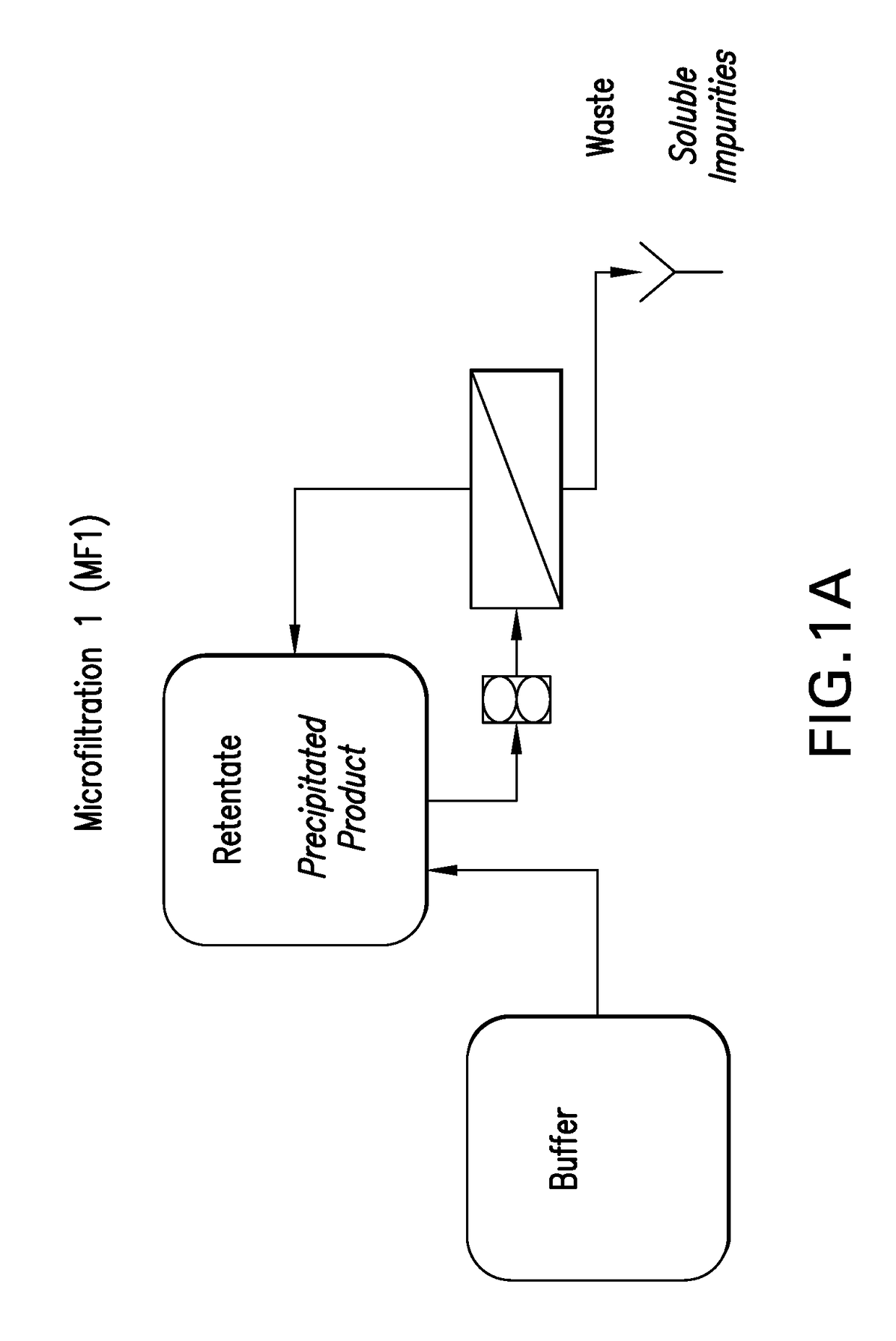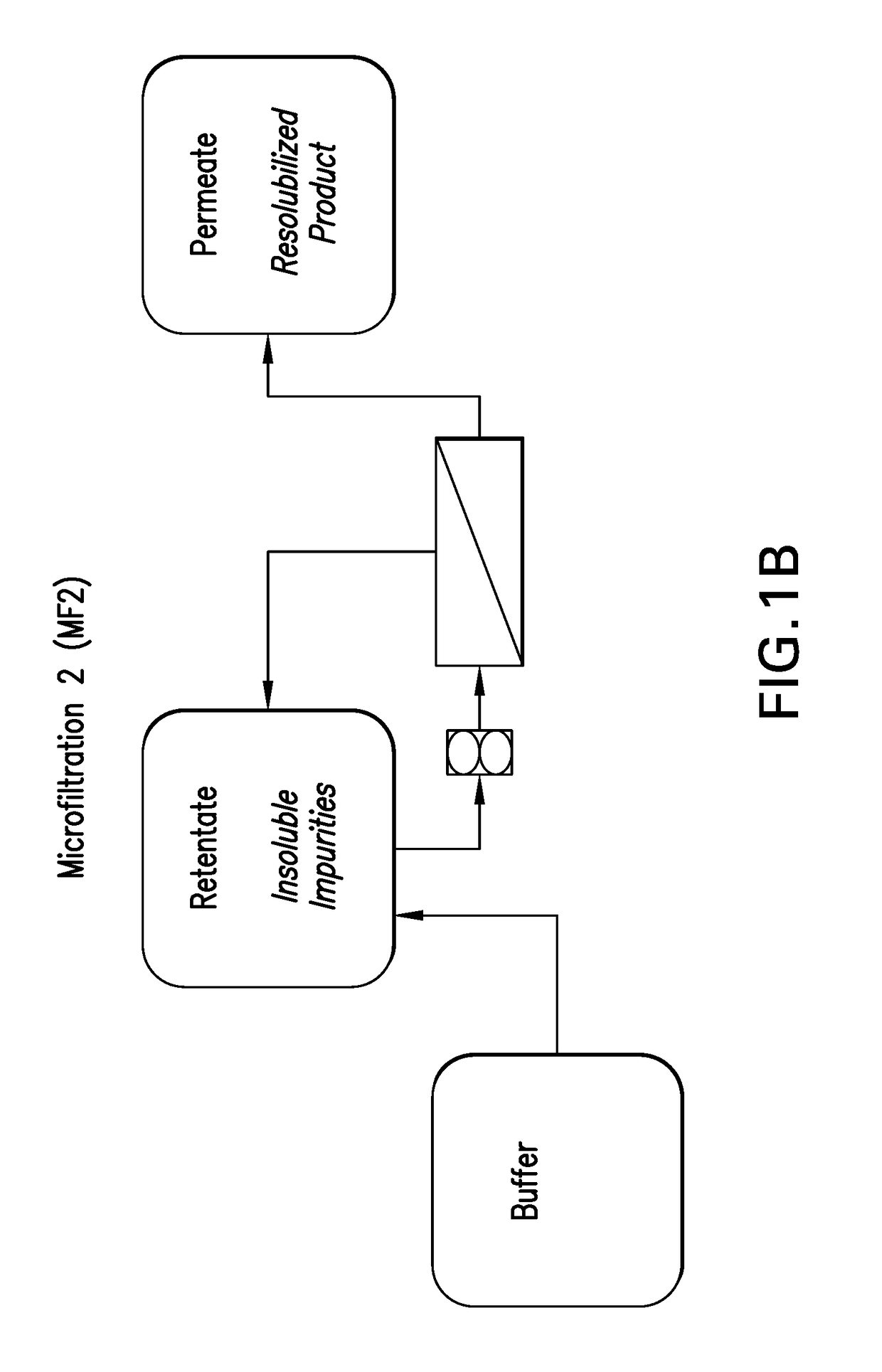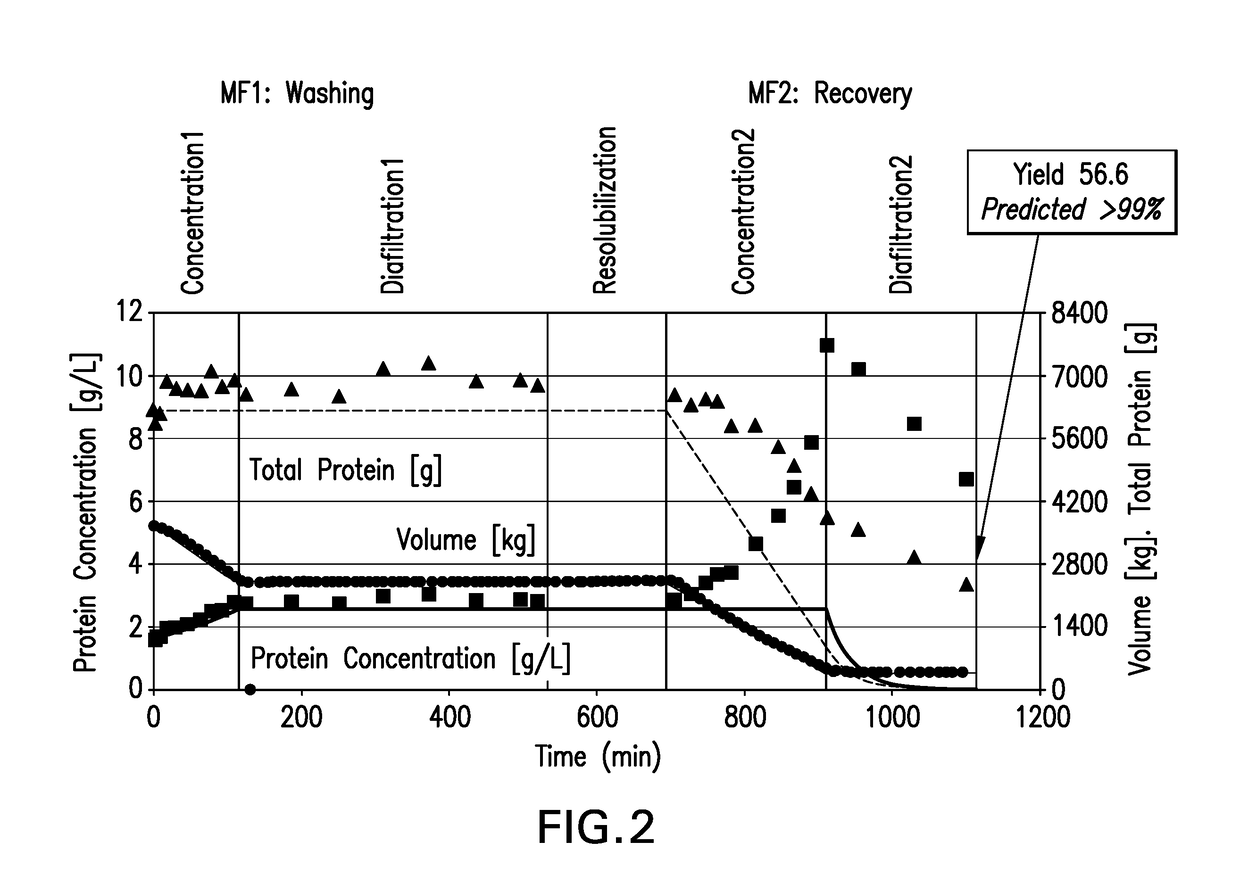Process for preparing recombinant insulin using microfiltration
a technology of recombinant insulin and microfiltration, which is applied in the direction of peptides, hormone peptides, animal/human proteins, etc., can solve the problems of difficult prediction of performance upon scale-up, increase flow resistance, and remain significant challenges for efficient scale-up, so as to facilitate the purification of proteins and peptides, and reduce both soluble and insoluble impurities
- Summary
- Abstract
- Description
- Claims
- Application Information
AI Technical Summary
Benefits of technology
Problems solved by technology
Method used
Image
Examples
example 1
[0111]Microfiltration of Insulin Glargine using Citrate-based Buffer is described.
Objective:
[0112]The precipitation of insulin glargine from the digest pool allows for its separation from soluble impurities such as host DNA, HCP, tryptic digestion by-products (e.g., cleaved C-peptide and N-terminal fusion) and residual trypsin via diafiltration during the microfiltration stage of the operation. Following filtration, the insulin glargine is resolubilized by acidification before further processing by cation exchange (CEX) chromatography.
Microfiltration (MF) Description:
[0113]This step is conducted in two stages: microfiltration step 1 (MF1)—During this first stage, the precipitated product is concentrated and washed via diafiltration to reduce residual trypsin and other trypsin related by-products (C-peptide, N-terminal fusion). The product remains as a precipitate on the retentate side of the membrane; microfiltration step 2 (MF2)—During this second stage, the washed product is solub...
example 2
[0117]Microfiltration of Insulin Glargine using Acetate-based Buffer is described.
Objective:
[0118]The precipitation of insulin glargine from the digest pool allows for its separation from soluble impurities such as host DNA, HCP, tryptic digestion by-products (e.g., cleaved C-peptide and N-terminal fusion) and residual trypsin via diafiltration during the microfiltration stage of the operation. Following filtration, the insulin glargine is resolubilized by acidification before further processing by cation exchange (CEX) chromatography.
Microfiltration (MF) Description:
[0119]This step is conducted in two stages: microfiltration step 1 (MF1)—During this first stage, the precipitated product is concentrated and washed via diafiltration to reduce residual trypsin and other trypsin related by-products (C-peptide, N-terminal fusion). The product remains as a precipitate on the retentate side of the membrane; microfiltration step 2 (MF2)—During this second stage, the washed product is solub...
example 3
[0123]Process analytical technology (PAT) may be used for improving consistency of MF processes and enabling more efficient scale-up (Rathore et al. 2010a). PAT methods encompass a broad range of analytical technologies that may be deployed on the manufacturing floor to provide real-time process monitoring for feed-forward and feed-back control as well as improved process consistency. In particular, high performance liquid chromatography (HPLC) and ultra high performance liquid chromatography (UPLC) based methods have been implemented in downstream purification processes to provide real-time concentration or purity measurements. These data have been used to inform chromatography pooling decisions (Rathore et al. 2010b; Rathore et al. 2008), control chromatography loading factors (Fahrner and Blank 1999), and ensure consistency of tertiary structure in oligomeric protein preparations (Barackman et al. 2004).
[0124]In this example, UPLC-based PAT was used to facilitate successful scale...
PUM
| Property | Measurement | Unit |
|---|---|---|
| pore size | aaaaa | aaaaa |
| permeate pressure | aaaaa | aaaaa |
| permeate pressure | aaaaa | aaaaa |
Abstract
Description
Claims
Application Information
 Login to View More
Login to View More - R&D
- Intellectual Property
- Life Sciences
- Materials
- Tech Scout
- Unparalleled Data Quality
- Higher Quality Content
- 60% Fewer Hallucinations
Browse by: Latest US Patents, China's latest patents, Technical Efficacy Thesaurus, Application Domain, Technology Topic, Popular Technical Reports.
© 2025 PatSnap. All rights reserved.Legal|Privacy policy|Modern Slavery Act Transparency Statement|Sitemap|About US| Contact US: help@patsnap.com



